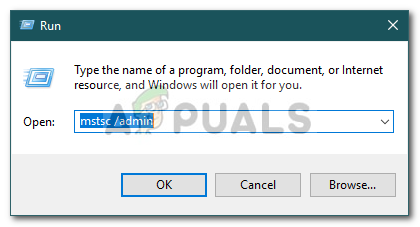Fix: Remote Session was Disconnected
because there are no Remote Desktop License Servers available to provide a license
Windows 10, like the older versions, provides users with Remote Desktop Protocol (RDP) feature through which users can connect from one system to other Windows devices. However, there have been several reports where users aren’t able to form a connection. Whenever they try to establish a connection, they are prompted with the ‘Remote session was disconnected because there are no Remote Desktop License Servers available to provide a license.’ error.

This error can be easily resolved by modifying one or two entries in the Windows registry. If you have been encountering the said error, this article will show you how to isolate it in no time. But before that, let us give the possible causes of the error a read.
What causes the ‘Remote Session was Disconnected’ Error on Windows 10?
Well, from what we have salvaged, this error is most of the time due to the following factor —
- TS not able to locate the license server. The major cause of the error would be the Terminal Server (TS). When this server is not able to locate the license server in the system, you will receive the said error message.
To circumvent the issue, you can follow the solutions given below. Please make sure to follow the instructions carefully as Windows Registry can cause critical issues to rise.
Solution 1: Deleting the MSLicensing Key
The reason due to which the Terminal Server (TS) is not able to locate the license server can potentially be due to this specific key. Therefore, you will have to delete the key and then try using RDP. Here’s how to do it:
- Press Windows Key + R to open Run.
- Type in ‘gpedit’ and then press Enter.
- Once the Windows Registry opens, navigate to the following path:
HKEY_LOCAL_MACHINE\SOFTWARE\Microsoft\
- Afterward, locate the MSLicensing key.
- Expand the key, right-click the ‘Store’ key and click Delete.

Deleting Store Key in the Windows Registry - Once prompted, select Yes.
- Check if the issue still persists.
Solution 2: Deleting the GracePeriod Key
You can also fix your issue by removing the GracePeriod key in the Windows Registry which, at times, can be the cause of the pop up. You can apply this solution if you are using Windows Server 2012 or later. Here’s how to do it:
- Open up the Windows Registry as shown in solution 1.
- In the Windows Registry, navigate to the following path:
HKEY_LOCAL_MACHINE\SYSTEM\CurrentControlSet\Control\Terminal Server\RCM
- In the RCM key, locate the GracePeriod key and right-click on it.
- Select Delete to remove the key. In some cases, you might have to take permissions over the key in order to remove it.

Deleting GracePeriod Key - To take permissions over the key, just right-click GracePeriod and select Permissions.

Changing Permissions of the GracePeriod Key - Then select your User Account and check the ‘Full Control’ and ‘Read’ boxes.
- Click Apply and then hit OK.
Solution 3: Run RDP as an Administrator
In some cases, the error can be merely due to insufficient permissions of the Remote Desktop Connection application. Therefore, to eliminate such a possibility, you’ll have to run the app as an administrator. If it fixes the issue, make sure to run the application always. Here’s how to do it:
- Go to the Start Menu, type in ‘Remote Desktop Connection’. Right-click on it and select ‘Run as an administrator’.
- Try connecting to see if it fixes the issue.
You can also use Run to run RDP as an administrator. Here’s how to do it:
- Press Windows Key + R to open Run.
- Type in the following command and press Enter:
mstsc /admin

Solution 4: Restart Remote Desktop Services
Finally, if the above solutions do not work out for you, you can resolve the issue by restarting the ‘Remote Desktop Services’ service. Here’s how to do it:
- Go to the Start Menu, type in Services and open it up.
- From the list, locate the ‘Remote Desktop Services’ service.
- Right-click on it and click ‘Restart’.

Restarting Remote Desktop Services Service - Try connecting again.





